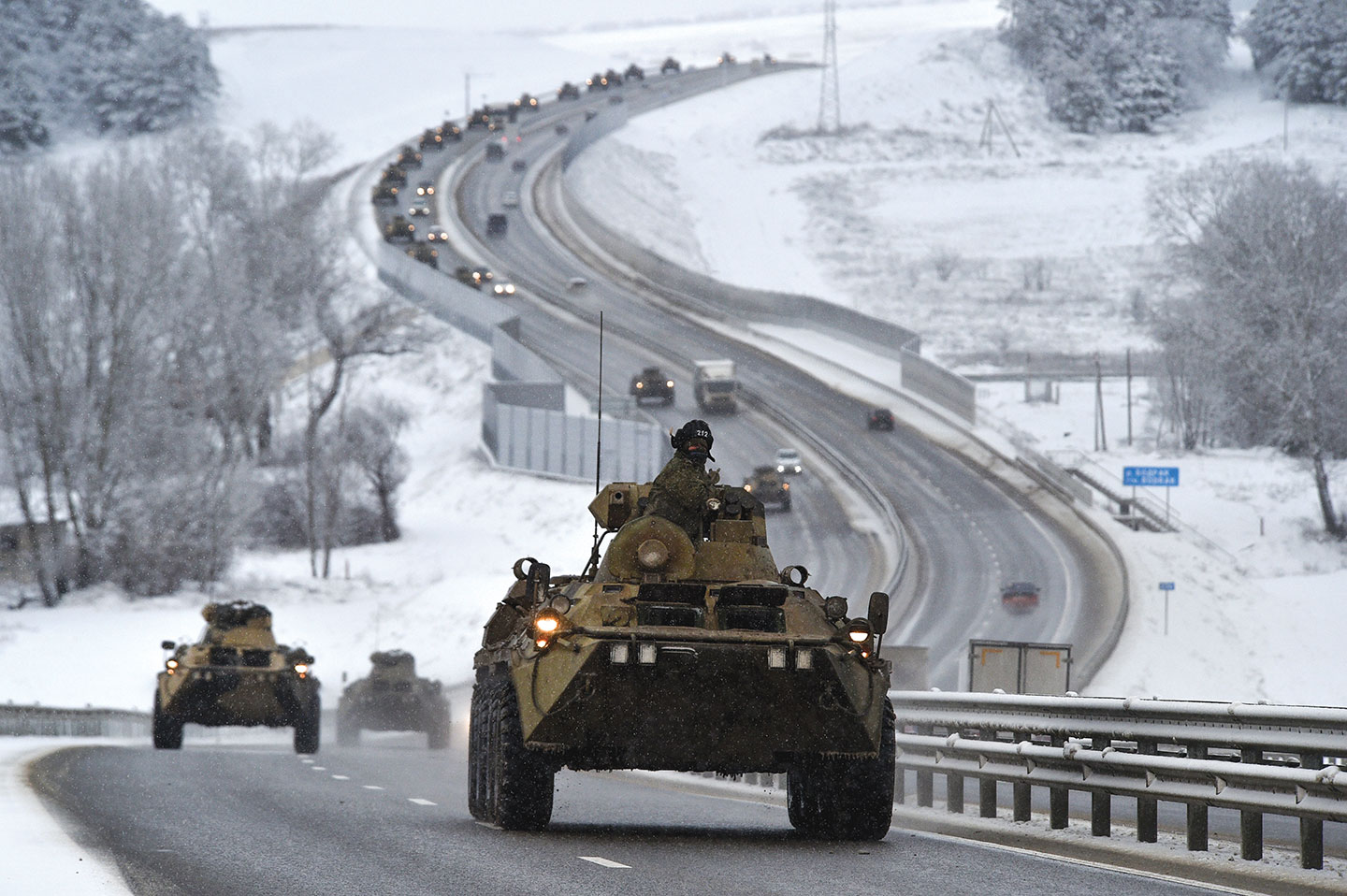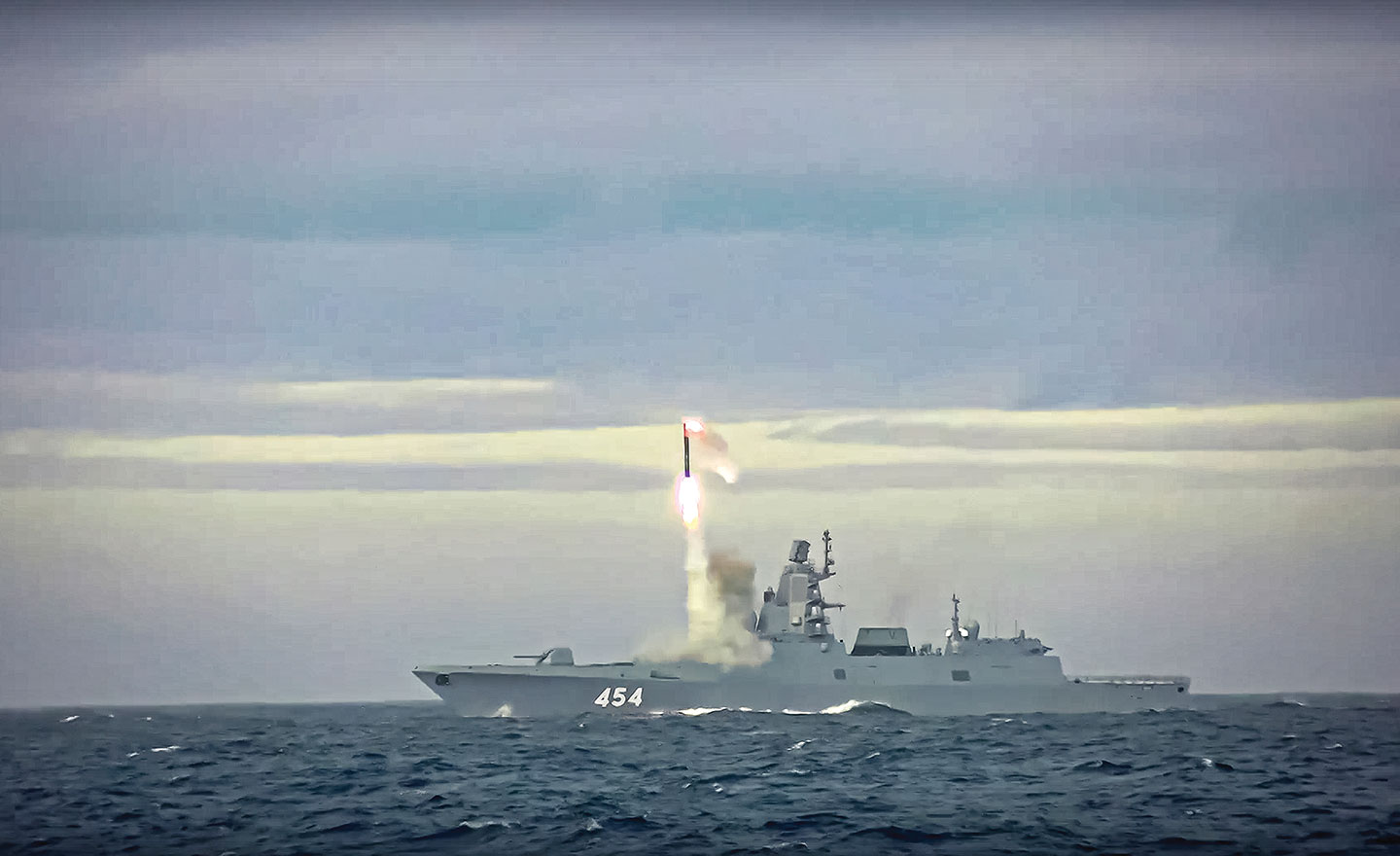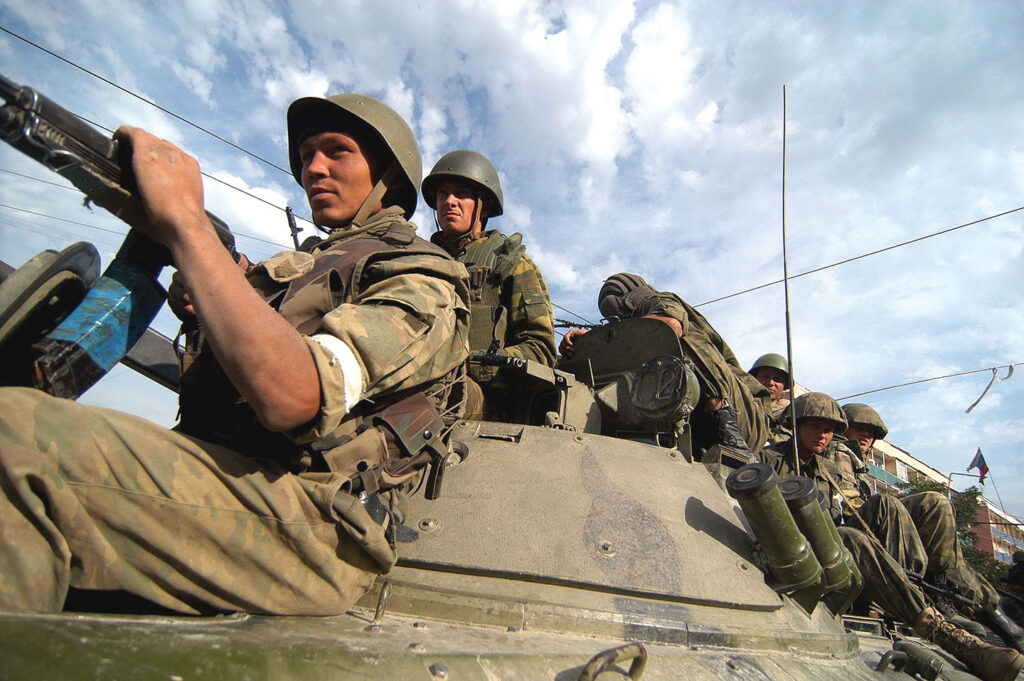A personnel carrier loaded with Russian troops enters the town of Gori during Russia’s 2008 invasion of Georgia, a precursor to current events in Ukraine. AFP/GETTY IMAGES
ROB HUEBERT/UNIVERSITY OF CALGARY
Many have treated Russia’s renewed attack on Ukraine in February 2022 as if this is new behavior by the Russian state. Several Western leaders acted as if the invasion took them by surprise.
Yet nothing could be further from the truth.
Russian militarization, especially within its Arctic region, is traceable to at least 2005 if not earlier. Russia’s recent actions in Ukraine are only part of a long-term approach that includes public pronouncements, military action and procurement decisions, and must be understood as such.
Russian President Vladimir Putin notified the Western world of his ambition to rebuild Russia as a great power as early as 2007, when he made his intentions public at a security conference in Munich. Speaking directly to German Chancellor Angela Merkel and U.S. Secretary of Defense Robert Gates in the audience, Putin declared that Russia would no longer accept Western domination. The Russian government followed this announcement with plans to increase defense spending and to modernize nuclear deterrence as well as conventional forces.
The Russians also began to use their military capabilities to prevent the expansion of NATO. The 2008 Georgian war had several causes, but one of the most important was Moscow’s use of military force to prevent Georgia from becoming a NATO member. This rationale arose again in 2014 when the new Ukrainian government took steps to seek membership in NATO. In this instance, the Russian response was to use military force to prevent Ukraine from doing so.

Russia has been confronted by several major challenges in rebuilding its nuclear forces but still has continued its efforts. Much of it has been directed to responding to improvements and advancements in U.S. weapons technology. Until recently, most Western observers ignored or dismissed these efforts. In retrospect, it is now clear that the Russians were determined to develop new delivery systems for their nuclear forces to counter U.S. weapons such as the Patriot anti-missile system. This has included rebuilding Russia’s nuclear submarine force, which is the most important element of its deterrent capability. Russia has also been extensively rebuilding air bases within its Arctic to protect its forces and to allow it to have extensive power-projection capabilities — both in conventional and nuclear terms. These include the Avangard hypersonic glide vehicles, the Kinzhal air-launched cruise missile and the Poseidon autonomous underwater vehicle, which are the best-known of these new systems. While debate remains as to whether these weapons — with their focus on stealth and speed — are as lethal as the Russians claim, there can be no doubt they have made extensive attempts to have a military that can act as a major deterrent. But the capabilities of these weapons also point to the possibility of them being used in an offensive manner. That is, it appears the Russians are thinking beyond deterrence and are looking to have forces who can fight with nuclear weapons.

Evidence of this can be found in Moscow’s defense policies and in statements made by senior leadership. The Russians have also developed policies that clearly indicate their intention to use nuclear weapons in the future. The Basic Principles of State Policy of the Russian Federation on Nuclear Deterrence announced in June 2020 emphasizes what Western observers have now termed “escalate to deescalate.” This policy specifically states that Russia reserves the right to use nuclear weapons if it feels threatened. Putin has made it clear that the Russians see the first use of their nuclear forces as a viable option. While some Western observers suggest this is only rhetoric, the reality is that Russia has been focused on rebuilding its military capability to allow it to deploy a powerful nuclear deterrent and to possibly use those weapons in a conflict if it decides the state is threatened.
The conflict in Ukraine has heightened concerns over what Russia may do if it believes that it’s losing the war and feels threatened. What Western observers need to fully appreciate is that the situation was not the result of recent events. Russia did not accidentally find itself in this conflict in 2022. Instead, it has been developing the capabilities and the policies to respond to the West since the early to mid-2000s.

